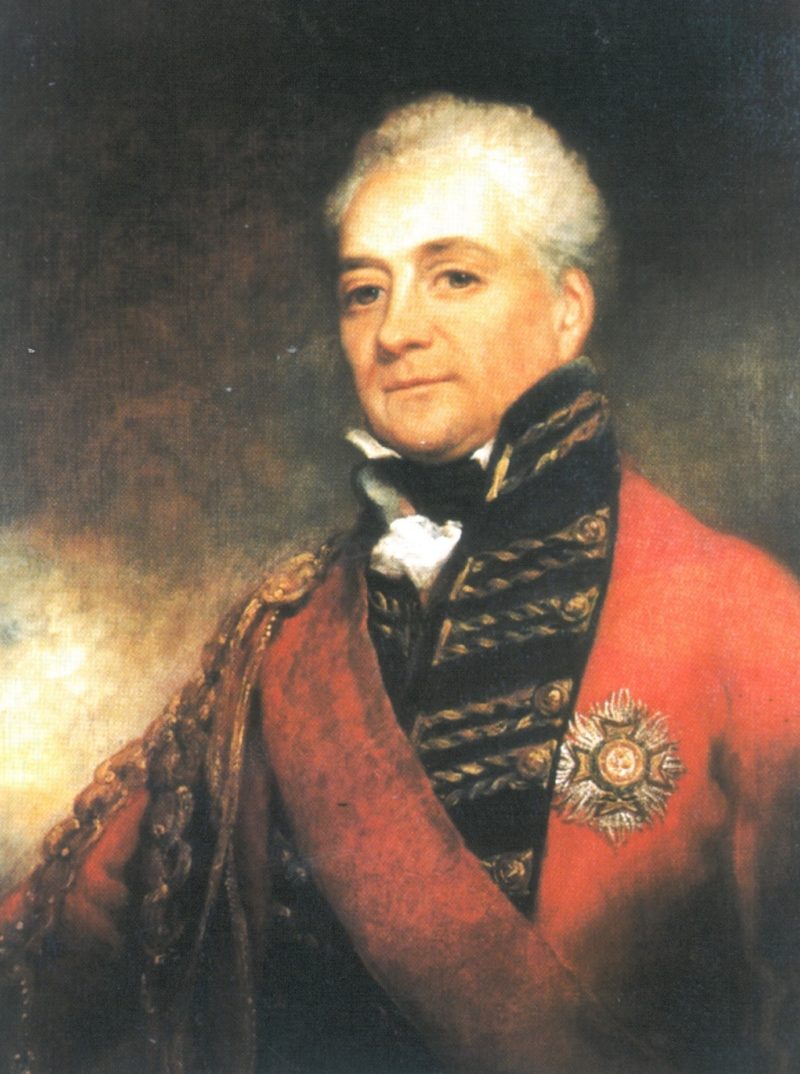The Anglo-Nepal War and Major-General Sir David Ochterlony

The Anglo-Nepal War and Major-General Sir David Ochterlony
Born in Boston in 1758 to an ancient Scottish family, David Ochterlony began his career as a cadet in the armies of the Bengal Presidency within the Honourable East India Company. He quickly rose up the ranks, becoming captain in 1796 and Major in 1800. By 1803 he had been appointed to the position of British Resident in the city of Delhi, representing British control there and defended it against attacks from the Maratha Confederacy (a collection of states in central and southern India). His skills as a soldier became more and more recognised and in 1814, now a Major-General, he was appointed to command one of the four columns involved in the planned East India Company invasion of Nepal.
Prior to the 1760’s Nepal had not existed as a unified country, but instead as a series of small kingdoms and city-states. However, from 1743 the King of the city-state of Gorkha, to the north of what is now Nepal, Prithvi Narayan Shah, began to conquer and consolidate the surrounding territory. In 1767, in desperation, some of the remaining cities requested aid from the East India Company against Prithvi Narayan Shah’s Gorkha forces, and so a small expedition under one Captain Kinloch was sent north to mediate the ongoing conflict and open up trade with Nepal and China to the north. This expedition was dogged by disease and high attrition rates and proved nothing more than a distraction, with Prithvi Narayan Shah’s forces eventually conquering the Kathmandu Valley in 1768 and proclaiming the formation of a new Kingdom of Nepal.
Over the next several decades, Nepal continued to expand, its raids and conquests fuelled by a series of aggressive prime-ministers. After fighting a brief war in Tibet with Qing Chinese forces, and being checked from further western expansion by the forces of the Sikh Empire of the redoubtable Ranjit Singh in 1809, Nepalese raids turned south, into the territory of the Indian state of Oudh, which fell under the East India Company’s sphere of influence. By 1813 these continuing raids into what the East India Company considered its territory, as well as frustration at continued Nepalese obstruction of British attempts to set up trade with Tibet and China, provided the justification for another British intervention in Nepal. In October 1813 the Marquess of Hastings, the British Governor General of India, ordered preparations for invasion to begin.
In late 1814 the four prepared columns of British and Indian troops advanced into Nepal, with Ochterlony’s column fighting in the west of the country. Whilst all three other columns quickly became bogged down or strategically outmanoeuvred, Ochterlony’s 6000-strong column met with success as he managed to tie down Gorkha forces under their commander Amar Singh Thapa. Early on in the campaign the overall commander of the expedition, General Rollo Gillespie, was killed during the siege of the fort of Kalunga and Ochterlony, given his successes in the west of Nepal, found himself appointed commander of the second campaign in 1816, leading 17,000 troops to follow up on his previous results. This second campaign focused more on central Nepal and by using an infrequently-taken mountain pass Ochterlony was able to outflank a significant portion of the Nepalese forces and march to within thirty miles of the Nepalese capital. By the end of March 1816 both sides decided to come to terms, with Ochterlony signing the Treaty of Segauli for the British forces, and allowing the recruitment of Gurkha soldiers into the East India Company’s forces to begin in earnest (though it had officially begun a year earlier in 1815).
For his role in bringing the campaign to a successful conclusion David Ochterlony was given the thanks of the British Parliament and was made a Knight Grand Cross of the Order of the Bath (the first East India Company officer to be so honoured) and a Baronet. He returned to the Residency at Delhi, which was combined with several others into a powerful political position.
Due to his very conspicuous behaviour, which included the flouting of many European norms in favour of Indian ones, by 1825 much of Ochterlony’s social credit from his military successes had been spent. He was passed over for promotion more than once and in 1825 his attempts to act on his own authority to support a local ruler against a revolt were rapidly rebuffed by the new Governor General, Lord Amhurst. Ochterlony felt extremely offended by this slight and resigned in protest, retiring to Delhi as a private citizen. He would not long survive his resignation and died in July 1825.
David Ochterlony, aside from a few final adventurers such as Alexander Gardner, has been viewed as one of the last great examples of the East India Company officials who in many ways tried to adapt to the customs and lifestyles of the new lands they came to have authority over and remained a curious mix of skilled soldier, political official and local ‘nabob’. By the time of his death these tendencies were already in decline, with a gradual solidification of British control requiring less overt adaption of local ways of doing things. In 1857, less than thirty years later, India would be rocked by the event referred to as the Indian Mutiny, or Indian Rebellion, and in its aftermath British control was firmly reconsolidated under the British Government itself, rather than the East India Company, closing the door finally on the days of such obvious fluidity between different cultural worlds for British officers and officials.

